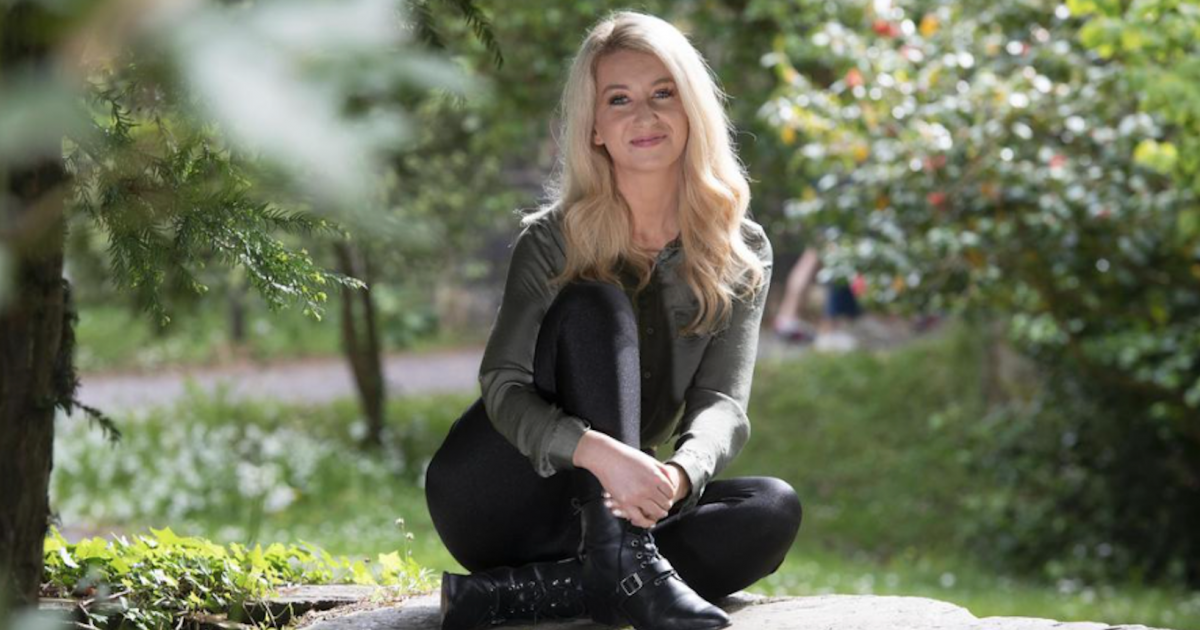Being Aware of Her Body Saved Her Life
- Skin cancer survivor Katie Maloney was 19 years old when she found out she had melanoma … the first time.
- Luckily, Maloney remembered her doctor’s warning when she beat the disease: If it were to recur, or come back, it would likely go straight to her groin area. Sure enough, seven years later, she found a lump in her groin and knowing what it was, sought care immediately.
- The two-time survivor is now advocating for skin cancer awareness, sharing her story, and urging others to learn more about skin cancer prevention.
Luckily, she remembered her doctor’s warning when she beat it: If it were to recur, or come back, it would likely go straight to her groin area. Sure enough, seven years later, she found a lump in her groin, and thanks to her doctor, Maloney knew to go in immediately. Because of her diligence and excellent care, she thankfully beat the disease a second time.
Read MoreSeven years later, she was back in Ireland to pursue a master’s degree in teaching, when she noticed a lump in her groin.
“I didn't want to believe the cancer had come back. But my surgeon had me well warned since the first cancer, that if it was to come back, it would most likely be in the groin."
Maloney felt like she was “walking the plank,” she expressed of her second melanoma diagnosis. “But I would be dead if I had ignored it,” she added. “If I hadn't been so well warned by my surgeon about the possibility of it reappearing in my groin area, I wouldn't be here.”
Like many other cancer patients, Maloney was sad, and angry, and also admitted to indulging in alcohol. “I wallowed for a while,” she said.
Treating Depression After a Cancer Diagnosis
It's normal to feel scared and anxious after a cancer diagnosis but some peopleabout 15 percentdevelop a major depressive disorder, which is why it’s important to talk to friends, family members, and a mental health professional if your symptoms aren’t going away.
Maloney, now a patient advocate for the HSE #SunSmart campaign, is now cancer-free for the second time. "I'm also in so much of a better place and that's down to therapy and dealing with all of things I refused to address when I was younger. The cancer, in the end, was a good thing. I'm much happier now."
Examining Your Skin for Melanoma
Finding skin cancer early can save a person's life, especially in the case of melanoma, which is typically much more aggressive. Maloney is lucky that the larger mole on her leg did not spread by the time she got it checked out. Even a cute-looking freckle can be melanoma, therefore it’s important to know how to identify potential skin cancer in between annual or bi-annual skin checks.
Dr. Cecilia Larocca, a dermatologist at Dana-Farber Cancer Institute, recommends looking at your skin once a month for anything suspiciousand using the acronym ABCDE as a checklist:
- Asymmetrical moles: if you drew a line straight down the center of the mole, would the sides match?
- Borders: irregular, jagged, not smooth; can also stand for bleeding
- Colors: multiple distinct colors in the mole
- Diameter: larger than 6mm, about the size of a pencil head eraser
- Evolution: This may be the most important thing that changes over time, such as gaining color, losing color, pain, itching, hurting, changing shape, etc.
Remember ‘ABCDE’ When Performing Skin Checks
If you pick up on any of these changes to a mole or notice a new one with some suspicious qualities, that would definitely be something to bring up with a dermatologist as soon as possible. A changing mole does not necessarily mean you have melanoma, but a dermatologist will be able to determine if further testing, like a biopsy, is necessary.
Learn more about SurvivorNet's rigorous medical review process.


